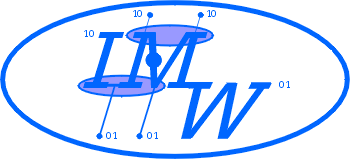INSTITUTE OF MATHEMATICAL ECONOMICS


Wulf Albers,
Andreas Guentzel
Abstract
A central idea of the theory of prominence in
the decimal system is that every number is presented as a sum of full step numbers
(i.e. the numbers a*10^i with a=1, 2, or 5, and i integer), where every full step
number appears at most once in the presentation with sign +1 or -1. For example
42=50-10+2. The question is whether subjects really perceive numbers this way, and
if they create numerical responses in a way that creates presentations of numbers
as sums of full step numbers of decreasing amounts. The answer is not only
interesting for further analysis of boundedly rational numerical decision processing,
but also for the theory of prominence.
To approach the problem, we asked 30 subjects first to answer a set of questions by
numerical responses, and thereafter to describe how they came to their responses,
and - if possible - to give numbers they considered during the process of finding
the numerical response. We did not consider reports where the subjects could not
remember any number but their final response, and we restricted the analysis to
questions which asked for probabilities.
The observed processes have a clear structure. They consist of three phases. In
phase 1 an anchor point A=0, 50, or 100 is selected. In phase 2 the anchor point is
refined by adding or subtracting a full step number F. This phase can be repeatedly
applied until the obtained result A+F or A-F cannot be improved. In this phase new
values of F replace the old ones. In phase 3 the result is stepwise refined by
adding or subtracting full step numbers of decreasing order, until the decision
maker reaches the limit of her ability of judgement.
Moreover there are several rules and properties which are fulfilled by the process,
and which suggest that numerical decision processing has quite strict rules as the
grammar of a language. Finally a detailed process model is given which describes
127 of the 134 considered reports in a reasonable way.
I thank Andras Guentzel who made the interviews of this investigation
as part of his diploma thesis. He analysed the data under different aspects
(see Guentzel 1993).

| walbers@wiwi.uni-bielefeld.de | ||||
| List of IMW Working Papers | Members of the IMW | |||
|
Last Update: Monday, 23-Nov-98 13:36:23 MET©
Michael Borgelt Sending to: 134.76.162.103, Index:1 |